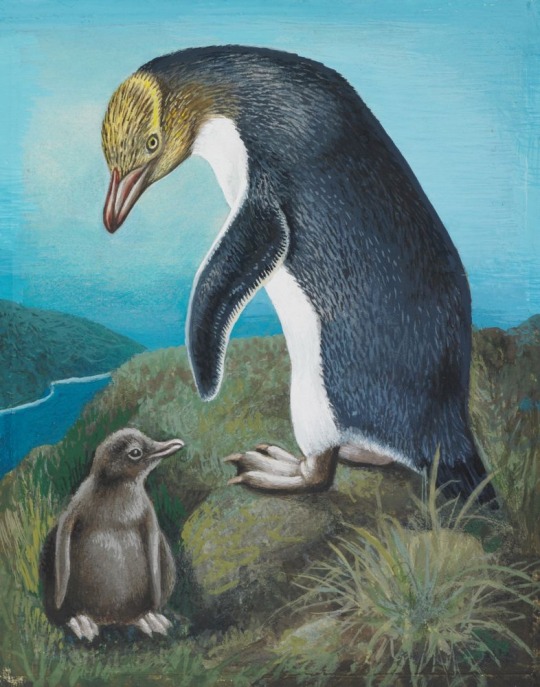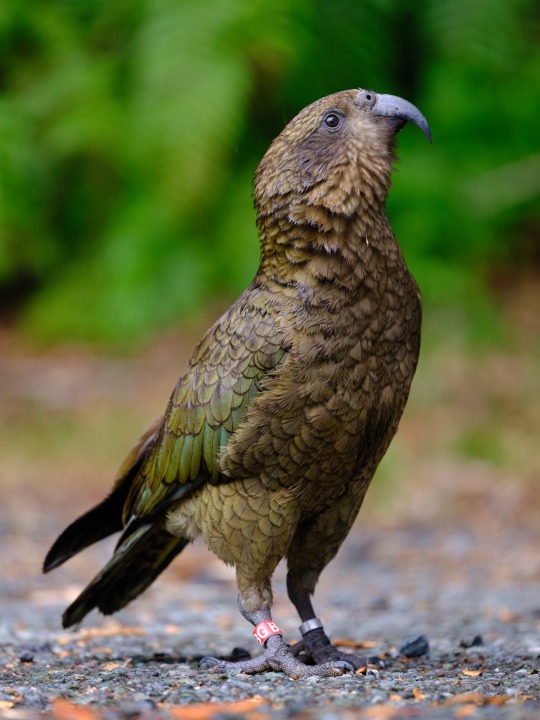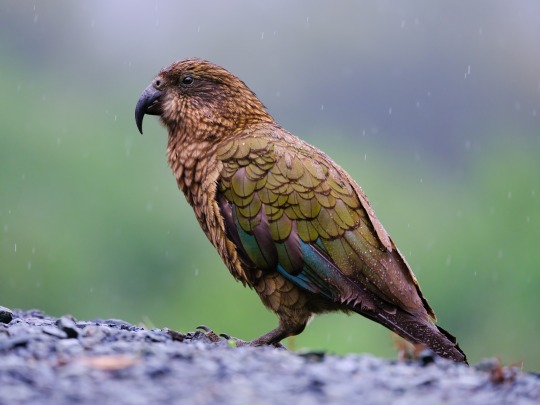#new zealand wildlife
Explore tagged Tumblr posts
Note
Could you do a poll for the kereru please?
Of course! Beautiful choice, I love their colors.


@bokoboy55 since I noticed you'd requested the kererū around the same time :)
#new zealand birds#kereru#kererū#nz birds#kūkupa#new zealand pigeon#columbiformes#columbidae#pigeon#pigeons#birds#wild birds#new zealand wildlife#animal polls#poll blog#my polls#animals#polls#tumblr polls#bird
71 notes
·
View notes
Text

Blue-Green Chiton (Chiton glaucus)
Family: Typical Chiton Family (Chitonidae)
IUCN Conservation Status: Unassessed
Like other chitons, the Blue-Green Chiton is a heavily armoured eyeless mollusc related to marine snails which relies on its strong aragonite-based shell to defend it from potential predators as it slides slowly along on a frilly "foot", clinging to surfaces beneath it as it travels using a layer of thin-yet-sticky mucus and the suction-cup-like shape formed by the foot's frilly rim. Although they lack any conventional eyes, the 8 armoured plates of a chiton contain numerous lens-like structures (also made of aragonite) which focus light onto a retina-like membrane, allowing the chiton to perceive light and possibly basic shapes above them in order to identify potential predators, giving them an opportunity to grip more tightly onto the surface beneath them to prevent them from being flipped over to expose their unarmoured underbelly (although if this does happen they are also able to curl up in order to leave as little of their foot exposed as possible.) Found in coastal and estuarine waters surrounding New Zealand and Tasmania, Blue-Green Chitons spend much of the day concealed in rocky cracks or under large stones and emerge at night to feed, using a spiny tongue-like structure that extends from their tiny downwards-facing mouths to scrape algae off of the rocks beneath them. The name of this species refers to the variety of colours seen on the shells of different individuals; while typically dull green, individuals with blue, yellow or pale brown shells are also frequently reported.
-------------------------------------------------------
Image Source: Here
Also see here for a very cool video explaining how chiton "eyes" work.
#Chiton#chiton#chitons#zoology#biology#malacology#animal#animals#marine animals#marine wildlife#marine biology#mollusc#molluscs#mollusk#mollusks#Oceanian wildlife#Blue-Green Chiton#new zealand wildlife#australian wildlife#wildlife#nature
45 notes
·
View notes
Text
For #WorldPenguinDay:

Eileen Mayo (1906-1994) Yellow-eyed Penguin, 1976 gouache on paper Museum of New Zealand / Te Papa Tongarewa
🆔🚨The Yellow-eyed Penguin (Megadyptes antipodes), known also as hoiho or tarakaka, is an endangered species of penguin endemic to New Zealand.
#penguin#penguins#Yellow-eyed Penguin#bird#birds#birds in art#New Zealand#New Zealand art#New Zealand wildlife#New Zealand animals#ornithology#ornithological illustration#zoological illustration#scientific illusration#natural history illustration#natural history art#20th century art#animal holiday#World Penguin Day#works on paper#Museum of New Zealand Te Papa Tongarewa#women artists#eileen mayo#animals in art
160 notes
·
View notes
Text
just two more species to write about from the NZ trip, and put into the queue - the Otago Shag and the Northern Royal Albatross. That's a total of just over 1250 observations and almost 650 species, in less than a month, and it's taken me over a year to ID and write them up.
Of course there's still 500 posts in the queue covering stuff from the Otago Museum and Otago Peninsula, although most of those will be reblogs of related posts by other people.
After that I think I might have to take a break from posting for a while....
#inaturalist#new zealand wildlife#new zealand plant#new zealand bird#new zealand insect#biodiversity
6 notes
·
View notes
Text

The Pacific Black Duck!
A waterbird commonly found in the South-Eastern Pacific islands.
In the Maori Language they are known as Pārera, The grey duck. They are distinguished from the similar female Mallard by the green on the edge of their wing that is not bordered by white.
#birblr#bird#birb#cute#Wildlife#Australian wildlife#Duck#Ducks#Black duck#Grey duck#New zealand wildlife
25 notes
·
View notes
Text
youtube
Meet the Kakapo: Nature's Unique Parrot
Discover the incredible Kakapo, a flightless parrot with a remarkable story. Explore its unique adaptations and vital role in its ecosystem.
Check out my other videos here: Animal Kingdom Animal Facts Animal Education
#Helpful Tips#Wild Wow Facts#kakapo#nature documentary#unique parrot#endangered species#New Zealand wildlife#rare birds#flightless parrot#nocturnal animals#wildlife conservation#parrots of the world#biodiversity#animal facts#nature lovers#birdwatching#ecological conservation#wildlife photography#native species#endangered animals#bird conservation#zoology#wildlife education#nature enthusiasts#unusual animals#animal kingdom#natural habitat#youtube#animal behavior#animal education
2 notes
·
View notes
Text
Sometimes we look at a painting. Sometimes the painting looks back
#wilderness#art#new zealand#giant eyes#art sees you#giant eye art#big eyes art#beach painting#new zealand wildlife#ultramarine blue
2 notes
·
View notes
Text
I didn't have my camera on me, but we have a guest in the harbour.
13 notes
·
View notes
Text
Discover why the Arthur's Pass Train, also known as the TransAlpine, offers one of the most stunning and unforgettable train journeys in the world. From breathtaking views of lush forests and snow-capped mountains to historic engineering feats and wildlife encounters, this scenic route offers a comfortable, eco-friendly, and adventure-filled travel experience perfect for all ages. Embark on an incredible journey through New Zealand's Southern Alps and explore the natural wonders of Arthur's Pass.
#Arthur's Pass Train#TransAlpine#New Zealand train journey#scenic train routes#Southern Alps#Arthur's Pass National Park#New Zealand wildlife#eco-friendly travel#historical train journeys#New Zealand travel#best train journeys in the world#photography destinations#family travel#outdoor adventures#Arthur's Pass Village#wildlife watching in New Zealand#New Zealand nature tours#train travel safety.
0 notes
Text
How does one help a Kakapo overcome its fear of flying lessons?
The kakapo (Strigops habroptilus) is one of the most unique and critically endangered birds in the world. Native to New Zealand, this nocturnal, flightless parrot has captivated the hearts of many due to its charming appearance and endearing personality. Despite its inability to fly, the hypothetical scenario of helping a kakapo overcome a fear of flying lessons offers a creative and engaging way…
#animal behavior#animal enrichment#animal psychology#animal welfare#behavioral enrichment#behavioral modification#bird conservation#conservation awareness#conservation efforts#endangered parrots#endangered species#environmental enrichment#ethical animal treatment#fear reduction#flightless birds#habitat preservation#habitat restoration#kakapo#lek breeding#nature-inspired activities#New Zealand wildlife#nocturnal birds#positive reinforcement#predator-free islands#public engagement#species protection#trust building#wildlife education#wildlife protection#wildlife training
1 note
·
View note
Text


Soggy creature
#sopping wet beast#animal art#wildlife art#wildlife illustration#kiwi#kiwi bird#silly art#silly#sillyposting#meme art#memes#artists on tumblr#cute art#creature#aotearoa#new zealand#bird art#birb art#birblr#zoology#cute birbs#birdblr#bird#birb#birbs of tumblr#wildlife#wet birds#baby birds
5K notes
·
View notes
Text

Ireland, Iceland, Greenland, New Zealand, and Antarctica are regions without native snake populations.
154 notes
·
View notes
Photo

Bigbelly Seahorse (Hippocampus abdominalis)
Family: Pipefish Family (Syngnathidae)
IUCN Conservation Status: Least Concern
Easily distinguished from other seahorse species thanks to their namesake large, rotund abdomens, Bigbelly Seahorses are found mainly in coastal waters surrounding New Zealand and southeastern Australia, where they typically remain in shallow-water habitats such as coral reefs (although they are highly adaptable, and may be found at depths of over 100 meters/328ft.) Like most seahorses they are slow-moving carnivores, spending much of their lives clinging to solid surfaces using their long prehensile (grasping) tails and ambushing small crustaceans (including shrimps, isopods, amphipods and small crabs) that pass by, generating suction to pull prey into their elongated tube-like snouts while their highly sensitive eyes (which, like the eyes of a chameleon, can move independently of one another) survey their surroundings for both prey and predators (such as skates, wrasses, cormorants and penguins.) Members of this species swim between perches by paddling slowly with their dorsal fins (which in most fish are on the dorsal/upper surface of the body, but which take the place of tail fins in seahorses) and while they are not typically social outside of mating they are not aggressive towards conspecifics, allowing for groups of Bigbelly Seahorses to gather together where prey is abundant. Bigbelly Seahorses reach maturity at around 1 year of age and will reproduce as many as 4 times in a single year; when ready to mate a male attempts to court females by inflating a pouch on his abdomen to appear larger, changing his colour to a brighter yellow and tucking his head downwards as he approaches - if the female accepts his advances she will similarly tuck in her head and change her colour, and the two will then solidify their bond by “dancing” together, swimming in circles around one another and often intertwining their tails as they do so. Once courtship is complete both partners will swim towards the surface where the male will position himself slightly below the female who will then deposit between 300 and 1000 unfertilized eggs in the inflated pouch on his belly, with the male fertilizing the eggs within his pouch and carrying them with him as they develop for around 30 days before he “gives birth” to a large number of small but completely independent young. Adult Bigbelly Seahorses can grow to be up to 30cm (11.8 inches) long from the tip of their tail to the top of their head, making them among the largest of all seahorse species.
--------------------------------------------------------------------------
Image Source: https://www.inaturalist.org/taxa/69837-Hippocampus-abdominalis
#bigbelly seahorse#seahorse#seahorses#fish#fishes#zoology#biology#icthyology#marine biology#animal#animals#wildlife#marine wildlife#Australian wildlife#oceanian wildlife#New Zealand wildlife
96 notes
·
View notes
Text


Here's some pictures I took of it up at Te Aroha last summer! It's pretty cool to see irl, and so close to home as well. Its even on our fifty dollar note :D

ok there’s no fucking way this thing is real. how.
#werewere kōkako#New Zealand wildlife#btw nobody has eaten it so thats why we don't know how poisonous it is#please dont eat the forbidden fungi guys.
30 notes
·
View notes
Text
The Great ACT-NSW-NZ Trip, 2023-2024 - National Kiwi Centre, Hokitika
Further down the West Coast we stopped in Hokitika, because that might be the only chance we got to see Kiwi.
True, the Kiwi in question are captive, but the Centre is part of the network of conservation sites set up just in case something disasterous happens to the remaining wild population. And they had some nice displays of other animals, some of them confiscated from idiots who tried to smuggle them into the country.





As for the area itself - the name Hokitika translates as "to return directly" after Ngāi Tahu warriors launched an attack on the Ngāti Wairangi pā, and the chief of the invaders drowned while trying to cross the river. The leaderless army then turned around and went home. Europeans flooded into the area after the discovery of gold (honestly a much less useful rock than the pounamu the Ngāi Tahu were after) and for a while Hotikika was the port of entry on the West Coast. Despite the fact that the rivermouth was a nightmare stretch of water - between 1865 and 1867 there were 108 strandings, and 32 shipwrecks.
Also the locale for New Zealand's biggest manhunt after a local farmer went on a shooting rampage in 1941.
#hokitika#longfin eel#new zealand wildlife#new zealand conservation#powelliphanta#giant carnivorous snail
0 notes
Text





The cheeky AF Kea from Milford Sound, New Zealand
YouTube | Tip Jar
#kea#nz birds#nz native birds#alpine parrot#photography#photographers on tumblr#new zealand#wildlife photography#bird photography#birds of tumblr#birbs of tumblr#birb#bird friend#new zealand destinations#milford sound
143 notes
·
View notes